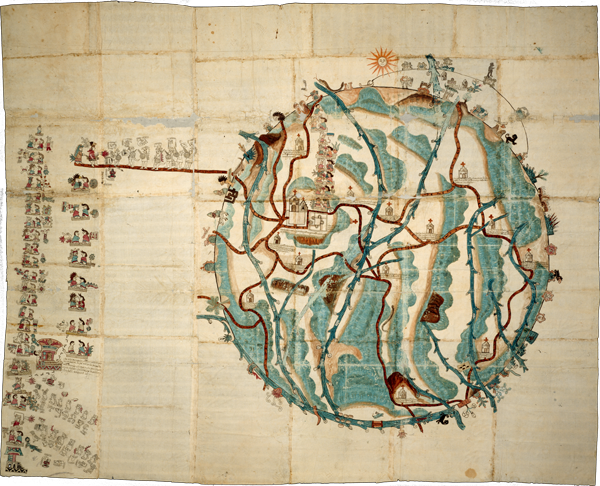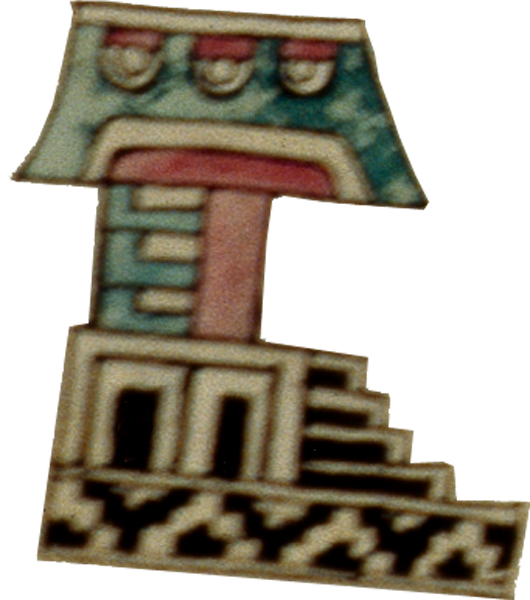Topograph of Tilantongo
The topograph consists of two different elements. (I) A temple built on top of a platform with stairs. Three stars are represented in the roof (1). The color blue of the roof helps to generate the reading andevui, “sky.” Temple and sky together produce the reading huahi andevui, “house of the sky,” one of the names of Tilantongo (and probably the name of its main temple). (II) The construction rests on an architectural frieze or panel decorated with a “stepped-fret” motif (2) painted in black and white. The frieze represents the word ñuu, “village,” and the black color indicates the reading ñuu tnoo, “black village,” the more common name of Tilantongo (3). Both names are attested in sixteenth-century sources.
-----
Notes:
(1) The stars are represented as “eyes” looking down from above.
(2) Stone panels decorated with the “stepped-fret” motif are found in Oaxacan archaeological sites like Mitla, Yagul and Teotitlán del Valle, and at Teposcolula in the Mixteca Alta.
(3) The Nahuatl toponym Tilantongo refers to the Tlillan, “the black place,” the name of the dark temples of the earth deity Cihuacoatl. Tilantongo means 'at the little Tlillan'.
Topograma de Tilantongo
El topograma consiste en dos elementos distintos. (I) Un templo construido sobre una plataforma con escaleras. En el techo se pintaron tres estrellas (1). El color azul del techo ayuda a generar la lectura andevui, 'cielo'. El templo y el cielo juntos producen la lectura huahi andevui, 'casa del cielo', uno de los nombres de Tilantongo (y probablemente el nombre de su templo principal). (II) El edificio está desplantado sobre un friso o tablero arquitectónico decorado con un diseño escalonado (2) pintado en blanco y negro. El friso representa la palabra ñuu, 'pueblo' y el color negro indica la lectura ñuu tnoo, 'pueblo negro', el nombre más común para Tilantongo (3). Ambos nombres aparecen en fuentes del siglo XVI.

